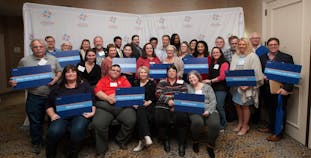Advance Online

Advance Online
Real Change Takes Collaboration and Dedication
A look at the last 20 years of NPF advocacy.

A look at the last 20 years of NPF advocacy.
We use cookies to offer you a better experience and analyze our site traffic. By continuing to use this website, you consent to the use of cookies in accordance with our Privacy Policy.